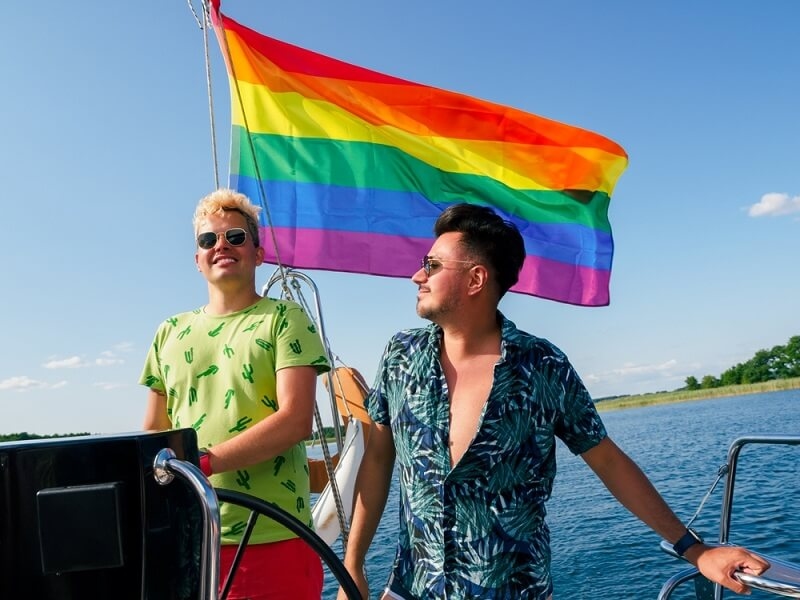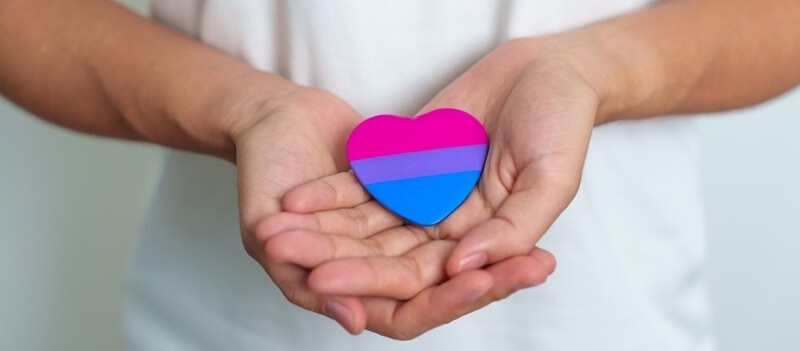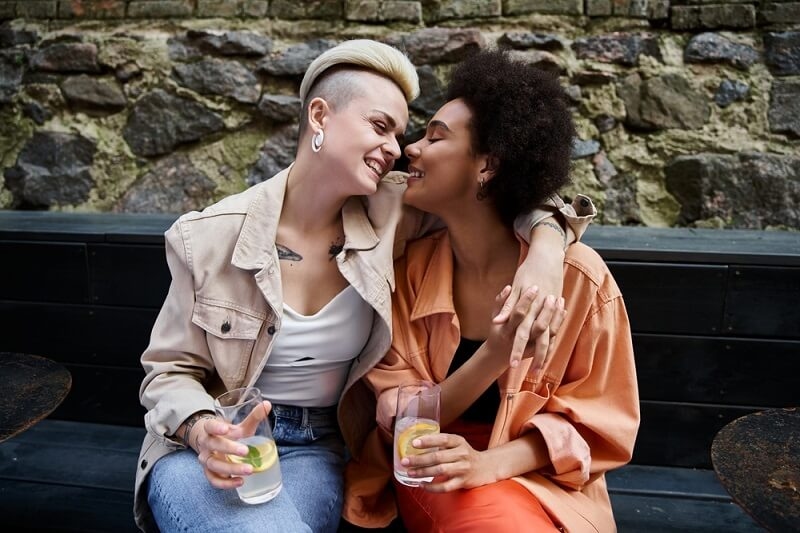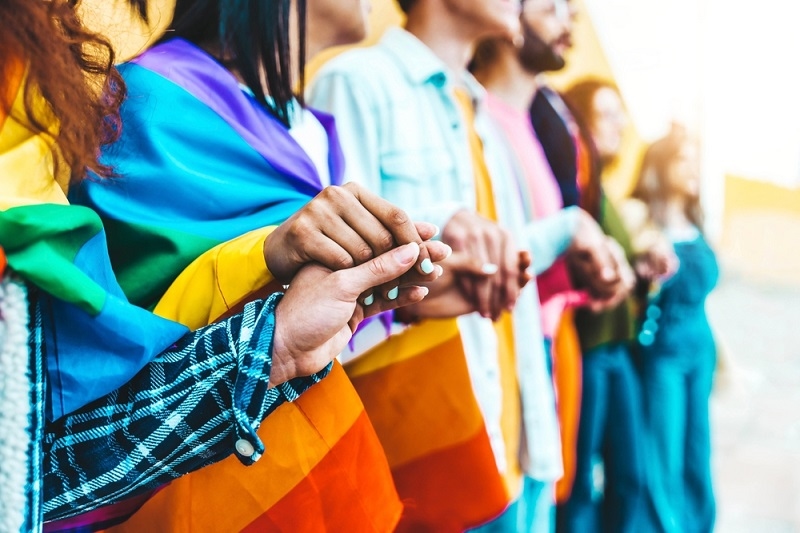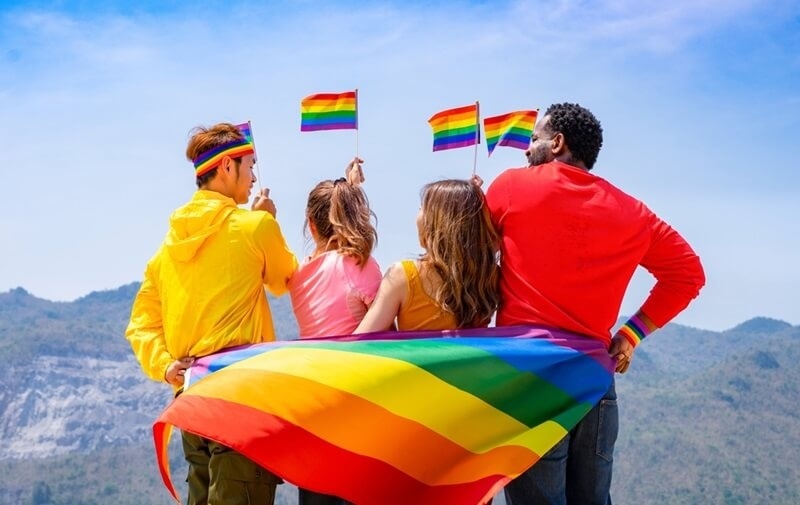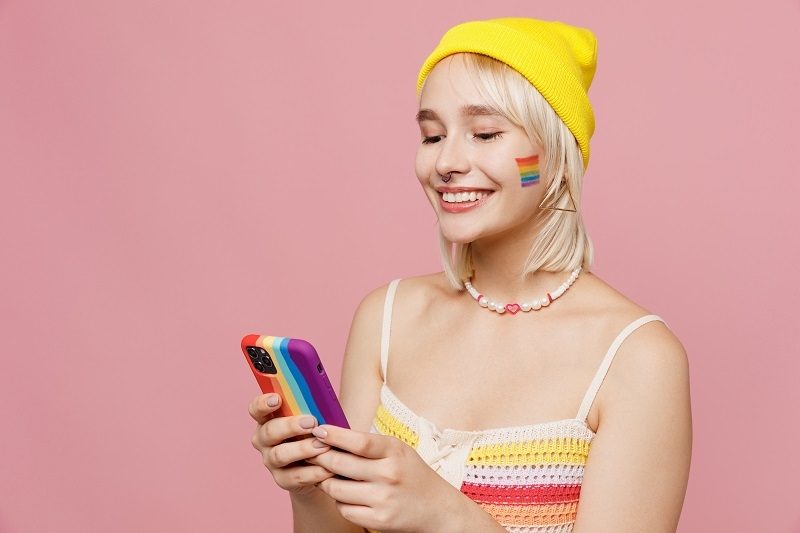Pride in Every Stripe: Decoding the Lesbian Pride Flag

Image: loveincmag.com
The conversation around Pride flags often centers on the iconic Rainbow Pride Flag, a universal symbol of LGBTQ+ unity and diversity. However, within the rich tapestry of the queer community, numerous other flags represent different identities and experiences, including the lesser-known Lesbian Pride Flag. This flag, like the updated Progress Pride Flag, serves a specific purpose by highlighting the unique aspects of lesbian identity and visibility within the broader LGBTQ+ spectrum.
The Evolution of the Lesbian Pride Flag
Labrys Pride Flag (1999)
The old lesbian pride flag, featuring a labrys and black triangle, harks back to the early symbols of lesbian strength and defiance. The first well-documented Lesbian Pride Flag is the Labrys Pride Flag, introduced in 1999 by designer Sean Campbell. This flag prominently features a labrysa double-headed axeoverlaid on an inverted black triangle against a purple background. The labrys, an ancient symbol associated with matriarchal societies, emphasize strength and self-sufficiency, traits revered in many lesbian and feminist circles.
The purple background and black triangle draw historical lines to both the LGBTQ+ community's enduring struggles and the power of reclaiming symbols of oppression. Initially embraced, the Labrys Flag's popularity waned due to controversies over its creation by a man and the use of symbols associated with the Holocaust, alongside its later co-option by groups with exclusionary views. This example illustrates the complex narratives and evolving meanings behind various pride flags within the LGBTQ+ community.
Lipstick Lesbian Pride Flag (2010)
In 2010, the Lipstick Lesbian Pride Flag was introduced by blogger Natalie McCray. Distinguished by its shades of red and pink and a lipstick mark in the corner, the flag aimed to celebrate lesbian femininity. However, it quickly became contentious, criticized for representing a narrow and commercialized view of lesbian identityspecifically, the "lipstick lesbian," a term fraught with stereotypical overtones from the 1980s pornography industry.
This led to the evolution of the Pink Lesbian Pride Flag, which retains the color scheme but omits the lipstick mark, broadening its representation to include a more diverse spectrum of lesbian identities.
Sunset Lesbian Pride Flag (2018)
The most recent iteration, the Sunset Lesbian Pride Flag, was designed in 2018 by nonbinary artist Emily Gwen, marking a significant step towards inclusivity. This flag features a gradient of colors from dark orange, symbolizing gender non-conformity, to deep magenta, representing femininity. The inclusion of a white stripe signifies unique relationships to womanhood, acknowledging the diverse experiences within the lesbian community, including those who are nonbinary or gender non-conforming.
The Sunset Flag's popularity underscores a shift towards flags that not only represent identity but also tell stories of individual and collective experiences. It is now commonly used in its original seven-striped form and a simplified five-stripe version, making it a prominent symbol in contemporary lesbian and queer spaces.
The lesbian pride flag colors symbolize a range of identities and emotions, from love and gender nonconformity to community unity. Each version of the Lesbian Pride Flag reflects significant cultural shifts and dialogues within the community. From the assertive symbolism of the Labrys Flag to the inclusive embrace of the Sunset Flag, these banners weave a narrative of resilience, diversity, and the ongoing journey toward visibility and acceptance in the broader social landscape.
Contemporary Variations and Inclusivity
Nonbinary Lesbian Flags
As the dialogue around gender identity has evolved, so too have the symbols representing it. The introduction of Nonbinary Lesbian Flags marks a significant evolution in the visual language of the LGBTQ+ community, specifically designed to include nonbinary lesbians who may not fully identify with traditional gender norms. These flags often maintain the basic structure of the seven-striped pride flag but modify the color scheme to convey specific meanings.
For example, dark orange represents gender non-conformity, acknowledging those who do not adhere to traditional gender roles. Black is used to symbolize complex relationships with gender and sexuality, embodying the nuances and varied experiences within the nonbinary and lesbian intersection. Similarly, the Omnisexual Pride Flag uses a distinct palette to represent the spectrum of attraction beyond gender, further enriching the diversity of flags within the LGBTQ+ community.
Sapphic Lesbian Flag
The term "sapphic" comes from Sappho, the ancient Greek poet known for her lyrical expressions of affection towards women. Today, "sapphic" is used broadly to describe women who love other women, transcending specific sexual identities like lesbian, bisexual, or pansexual.
The Sapphic Lesbian Flag is elegantly simple, featuring two pink bands encapsulating a central violet. The violet, a flower Sappho wrote about extensively, symbolizes love and affection between women. This flag not only celebrates the historical roots of female love but also serves as a banner for anyone who feels a connection to sapphic identity, regardless of their specific gender or sexual orientation.
Sun and Moon Lesbian Flags
In a creative expansion of the Sunset Lesbian Pride Flag, the Sun and Moon Lesbian Flags introduce an aesthetic twist that allows individuals to connect more personally with their identity. The Sun Lesbian Flag features a gradient of red and orange, evoking the vibrant energy and vitality of the sun.
Conversely, the Moon Lesbian Flag uses shades of dark purple to dark pink, reflecting the more introspective and mysterious qualities of the moon. These flags do not have fixed meanings assigned to their colors, which encourages personal interpretation and identification, allowing individuals to find or assign meanings that resonate with their personal experiences and feelings.
Choosing the Right Lesbian Pride Flag
There is no official lesbian flag, but various designs are embraced by the community. The Labrys and Lipstick Lesbian flags have been controversially adopted by some exclusionary groups despite their non-transphobic origins.
These associations, particularly due to transphobic sentiments linked to the creator of the Lipstick Lesbian flag, have marred their inclusivity. The most recent and broadly accepted flag, the Sunset Lesbian Flag, stands out as the most progressive and inclusive option, free from the controversies surrounding earlier versions, making it a preferred choice for those seeking a truly representative symbol.
You may also like: Omnisexual Pride Flag: Symbol of Diversity and Inclusion.
Conclusion
The pride lesbian flag is a beacon of visibility and solidarity, celebrating the rich and varied tapestry of lesbian identities. The array of Lesbian Pride Flags today illustrates the beautifully decentralized and continuously evolving nature of queer culture and pride symbols. Each new flag iteration does not just represent identity; it narrates personal and collective stories of struggle, acceptance, and celebration. This fluidity invites members of the LGBTQ+ community and their allies to engage actively with these symbols, perhaps even creating new ones.
In doing so, they contribute to a rich tapestry of visibility that celebrates the full spectrum of human diversity. This engagement not only fosters a deeper understanding of one's identity but also strengthens the collective bond within the community, encouraging everyone to find or create the flag that truly speaks to their unique experience.
This content was created by AI







